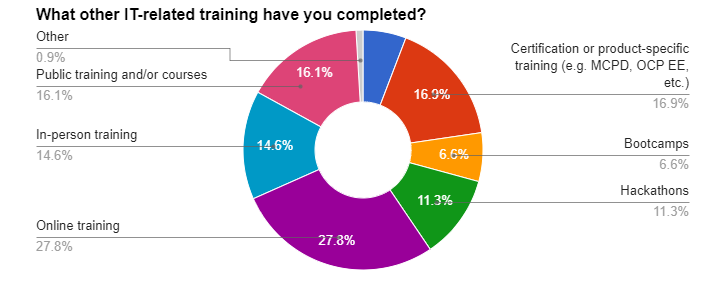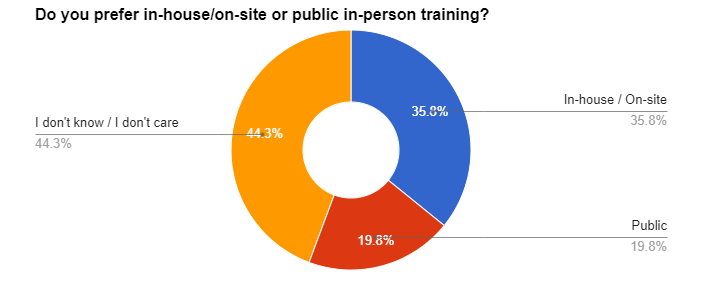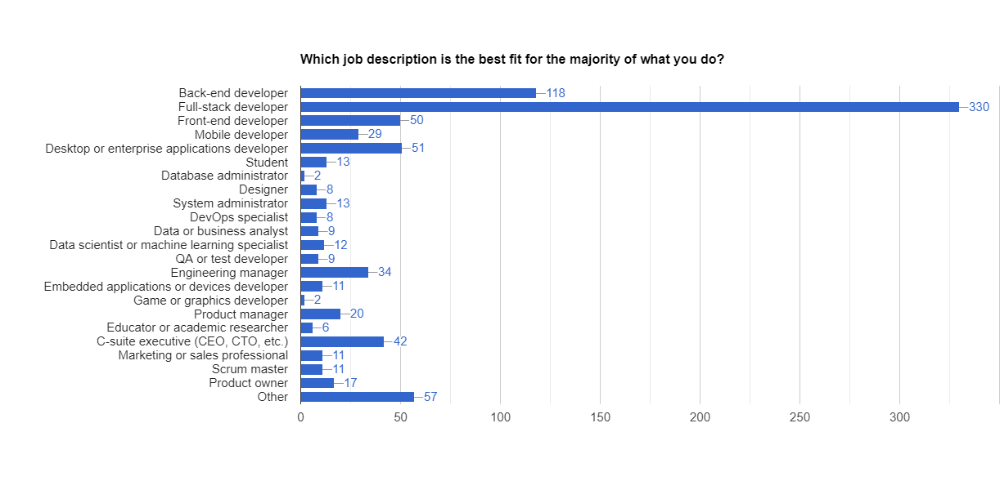
38 percent of the participants identify themselves as full-stack developers. Back-end accounts for 14 percent, while front-end and desktop or enterprise application developers each account for about 6 percent. Despite a large selection, the next largest group could not find a proper job description - they identiy as "other".
Also interesting: 42 people, about 5 percent, belong to the C-Level - they seem to be management personnel that codes or used to code.
This is an interesting parallel to some of the biggest IT companies like Google, Amazon, Microsoft or Facebook, where the founders were all developers themselves.
.png)
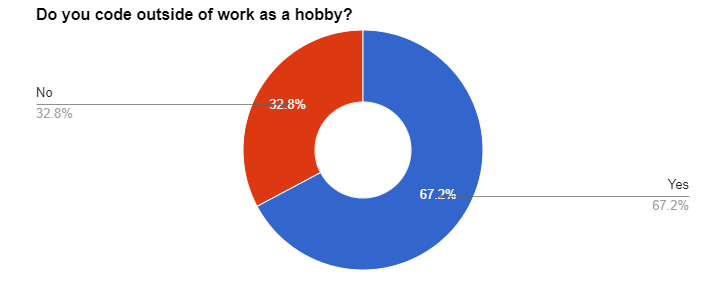
.png)
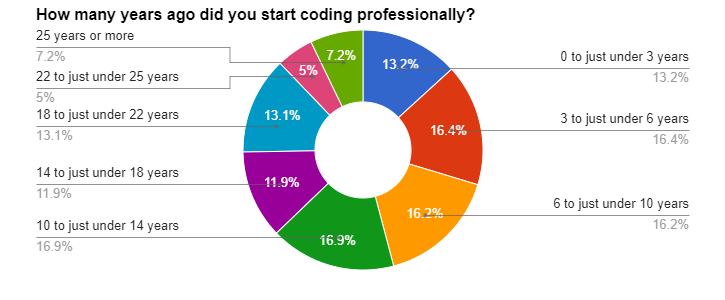
.png)
.png)
